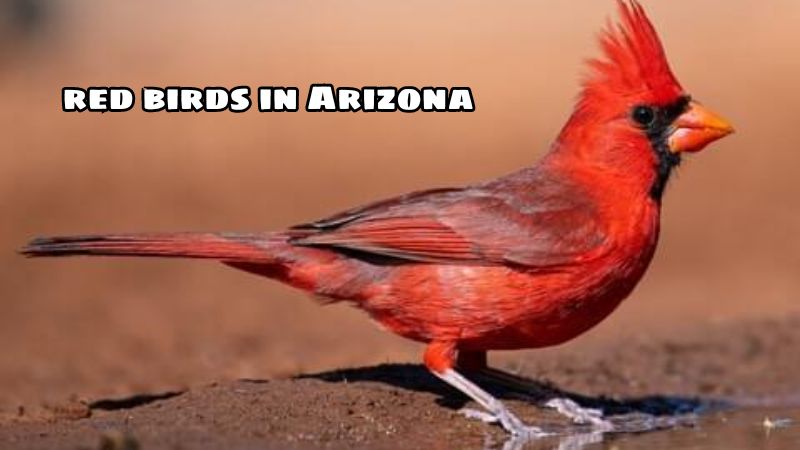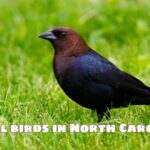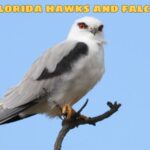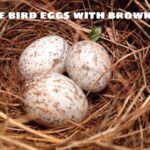Have you ever come across red birds in arizona and wondered what kind of bird it was? Luckily, this guide will help you identify exactly what kind of red bird you saw! Arizona is a wonderful state with a rich fauna, and there are no less than 17 species of red birds found here. In this article, birdsofjoy.com will explore the common red birds in Arizona, including birds that are both completely red and partially red.
Summary of 17 species of red birds in Arizona
1. Northern Cardinal
The male is a bright red with a black mask and throat. The female is a pale orange-brown with red on the crest, wings, and tail.
Both males and females have crests on their heads and short, thick bills, well-suited for cracking seeds.
The Northern Cardinal is one of the most common and recognizable red birds in Arizona. They are a regular at bird feeders and have a distinctive “birdie-birdie-birdie” or “cheer-cheer-cheer” call.
2. House Finch
The male is pinkish red around the head and upper breast, with brown markings on the back, tail, and belly.
The female is brown with markings on the back, tail, and belly.
The house sparrow is a red bird that is frequently seen near humans, from yards and parks to urban and suburban areas. They have a distinctive chirping song and are often the first birds to discover a new feeder.
3. American Robin
The chest is rusty red, with a dark head and back.
The throat is white and there are white spots around the eyes.
The American Robin is a familiar red bird in Arizona, often seen pulling up earthworms in the lawn. Although they do not eat seeds, they do eat invertebrates and fruit. They have a cheerful, familiar song that sounds like “cheer, cheer, cheer.”
4. Purple Finches
Purple finches are small birds with conical bills, well-suited for eating seeds. Males are strikingly raspberry-red on the head, breast, and back, while females have distinct white and brown markings on the underparts, along with white eyebrows and a dark line along the sides of the throat. They are often described as being dipped in raspberry juice.
Purple finches can be difficult to distinguish from common house sparrows, but the main difference lies in the purple finches’ red backs. They often visit feeders in Arizona, especially in the winter. Black oil sunflower seeds and conifers in the yard are attractive. Males sing a melodious, musical song.
5. Redbill
Redbills, also known as Loxia curvirostra, are about the size of sparrows and possess a distinctive cross-beak, which allows them to bend into tight cones. The male is red all over with dark reddish-brown wings and white wing stripes, while the female is yellow with dark wings without spots.
Red-billed woodpeckers are usually found in large coniferous forests, mainly spruce, pine, and Douglas fir, where they breed. In winter, they travel in search of food and sometimes visit bird feeders in Arizona. The male’s song sounds like “chipa-chipa-chipa, chee-chee-chee.”
6. Red-naped Woodpecker
The red-naped woodpecker, Sphyrapicus nuchalis, has a black body with a white stripe along the wing and a red crest. The male has a red throat and nape, while the female has a red throat with a small white patch under the bill and the nape may be white or red.
They are often found near poplars, birches, and willows, where they drill small holes to suck the sap. The red-naped woodpecker has a specialized tongue with stiff bristles at the tip, which helps it drink sap efficiently. The most common sound is a hoarse, repetitive “waah” that sounds like a baby crying.
7. Red-naped Hummingbird
The red-naped hummingbird, Pyrocephalus rubinus, is a small bird with a flat head and a short, thin bill. The male is bright red with a black-brown streak across the eye, on the back and wings. The female is brown with a red belly.
They live in scrubland, deserts and canyon mouths. The red-naped hummingbird spends most of its time perched on exposed branches, waiting to catch flying insects. The male sings a simple, repetitive chirping song.
8. Liver Sparrow
The liver sparrow, Piranga Flavor, has males that are red with gray streaks on the back and wings, and a long silvery bill. The female is greenish-yellow with gray cheeks.
They live mainly in pine forests or mixed forests with dense vegetation. They like to hop between trees and bushes in search of food such as insects. Their song is a series of melodious, whistled notes with short pauses.
9. Painted Redtail
The painted redtail, Myioborus pictus, has a bright red breast and belly, black head, back, and sides, and white wings and tail.
They live in forests near rivers, streams, dry forests, and mountains. They feed on insects and tree sap, often visiting feeders with peanut butter or lard. The song of the redtail is the beautiful song “cheerful cheerful cheerful chew.”
10. Pyrrhuloxia
The pyrrhuloxia, Myioborus pictus, has a short yellow bill like a parrot’s beak, the male is mostly gray with red on the face, crown, throat, chest, wings, and tail. The female is gray with red on the crown, wings, and tail.
They often visit backyard bird feeders and love sunflower seeds. This species has a distinctive circling flight pattern, and the male courts females with clear calls, flapping wings, bowing, and giving gifts. Their song is loud and resonant, “chewee chewee chewee wheet wheet wheet.”

14. Red-faced Nightingale
The Red-faced Nightingale, Cardellina rubrifrons, has gray upperparts and white underparts, a red bill and throat.
They live in canyons and along streams, only in Arizona and New Mexico, and prefer to breed at high altitudes. Red-faced Nightingales forage for insects on tree branches and chase prey in flight. Males display mating behavior by showing off their red faces and white rumps. Their song is extremely sweet, “sweet-sweet-sweet-weeta-see-see-see.”
15. Elegant Trogon
The elegant trogon, a medium-sized humpbacked bird with long wings and tail. The male has a bright red belly, white breast band, metallic green head, back and chest, and black face and throat. Females are grayer on the head and chest, with a red belly and white spots below the eyes.
They live in Sagamore Canyon, oaks along riverbanks, vegetation edges, or pine-oak forests. The elegant trogon uses old woodpecker holes for nesting and depends on woodpeckers for successful breeding.
16. Summer Tanager
The male is bright red, the female is yellow, with a green back and wings.
The male Summer Tanager is one of the few all-red birds in Arizona. They often hunt insects high in the treetops and are especially fond of bees and wasps.
17. Pine Grosbeak
A large, stocky sparrow with dark gray wings with two white lines.
The male is reddish-pink and gray, the female and juvenile male are gray with a reddish-orange or yellow tinge on the head and rump.
The largest sparrow in Arizona, frequents feeders in winter. They have a distinctive high-pitched song and love to eat sunflower seeds.
Conclusion
Arizona is a paradise for bird lovers, especially those who are passionate about the bright red colors of the birds here. From the purple sparrow with its striking raspberry red color, to the red-naped woodpecker with its unique ability to suck tree sap, each species brings its own beauty and wonder.
Species such as the red hummingbird with its agile hunting skills, or the red-faced nightingale with its sweet song, all contribute to creating a vivid picture of the biodiversity of this land. Discovering and learning about the 17 species of red birds in Arizona not only helps us love nature more, but also reminds us of the importance of protecting and maintaining habitats for rare birds.





